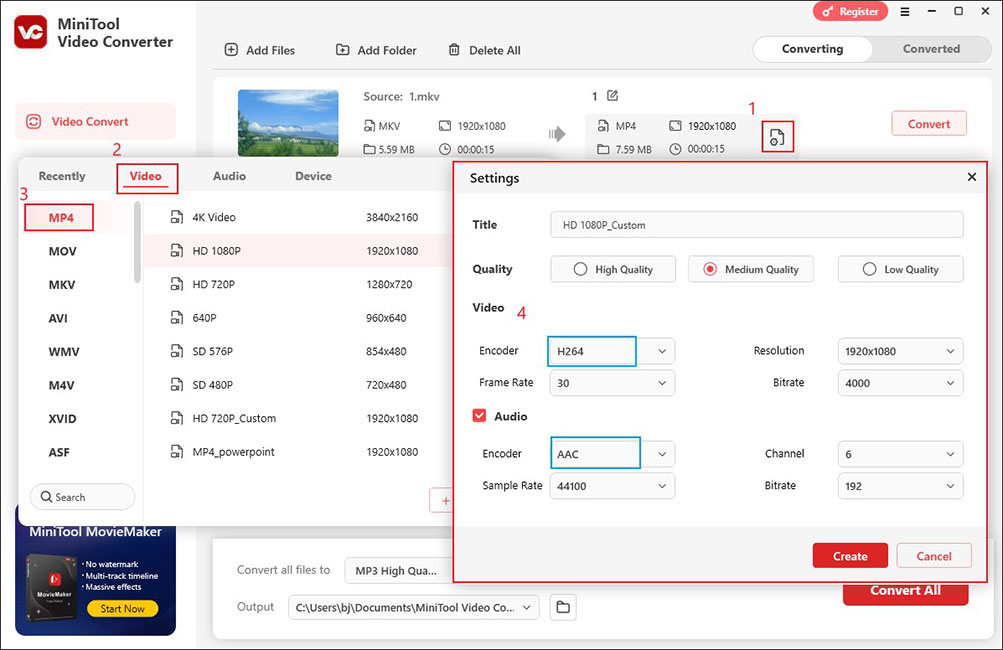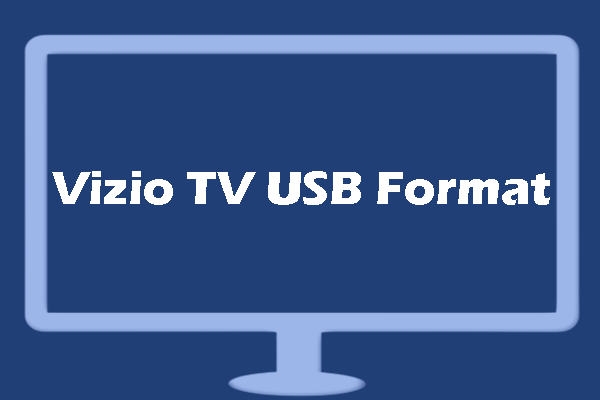Philips TV USB Video Formats
In this part, I’ll show you the USB format for Philips TV. More importantly, I’ll introduce you to what video formats Philips TV can play. Without further ado, let’s get right to it.
#USB Format for Philips TV
Philips TV USB format: FAT32 or FAT
#Philips TV USB Video Formats
- AVI: It supports AVI files with MPEG-4SP or MPEG-4 ASP video codec and MPEG Layer 2/3 or AC3 audio codec.
- MPEG: It supports MPEG files with .mpg, .mpeg, or .vob file extensions. These files need to use the MPEG-1 or MPEG-2 video codec and the MPEG-1 Layer 2, LPCM, or AC3 audio codec.
- MPEG4: MP4 files encoded with H.264 (MPEG-4 AVC) video codec and AAC-LC or AAC-HE audio codec.
- WMV: It supports WMV files encoded with WMV/VC1 video codec, and the audio is in WMA format.
How to Play Videos from USB on Philips TV
After mastering the Philips USB video formats, it’s time for you to learn how to play videos from your USB drive on Philips TV. If you don’t know how to do that, just follow me to read the instructions below. If you already know how to do that but encounter the videos not playing on Philips TV error, you can proceed to the next part.
Here are detailed steps to play videos from a USB drive on a Philips TV.
- Insert your USB drive into the USB port of your Philips TV.
- On the Philips TV remote, press the My Content button and navigate to the Multimedia section, which includes three categories: Pictures, Music, and Videos.
- Go to the Videos category and find the video you want to play. Then press OK to play it.
Videos Won’t Play on Philips TV
Sometimes, you may fail to play videos from a USB drive on a Philips TV. Unsupported formats, incompatible codecs, or corrupted video files can cause it. Also, if your USB drive is not formatted in FAT or FAT32, your Philips TV can’t read your USB drive properly. When you experience the videos won’t play on Philips TV error, you can try the following solutions.
Solution 1. Transcode Video to Philips TV Supported Format or Codec
You need to make sure that your video format or codec is supported by Philips TV. If not, you need to transcode your videos.
MiniTool Video Converter can give you a hand. It is a 100% FREE video converter which can perform various video and audio conversion tasks, including but not limited to MP4 to AVI, MKV to WebM, VOB to AVI, MKV to WMV, and more. You can also use it to transcode the video and audio codes, like H.264, H.265, AV1, VP9, AAC, AC3, and more. Below is how to transcode a video to Philips TV-supported format via MiniTool Video Converter.
Step 1. Get this free video converter by clicking the button below. Then install it on your PC and launch it.
MiniTool Video ConverterClick to Download100%Clean & Safe
Step 2. Insert your USB drive into the USB port of your PC. Your computer will recognize the USB drive. Next, click the Add Files option in MiniTool Video Converter to navigate to the USB file and import the video you need to convert.
Step 3. Click the Output Settings icon framed in the screenshot below and switch to the Video tab. Take MP4 as an example. Click the Edit icon next to the HD 1080P preset. Make sure H264 and AAC are the video and audio codecs. Also, you can choose other formats and codecs supported by Philips TV.

Step 4. Open the Output list and click Browse to choose your USB folder to save the converted video.
Step 5. Click Convert to initiate the conversion process. Then you can click Open to locate the video.
Solution 2. Format Your USB Drive to FAT or FAT32
How can you format your USB drive to FAT or FAT32? You can refer to the detailed instructions below:
Step 1. Insert your USB drive into the USB port of your computer.
Step 2. Open your File Explorer, find your USB drive, and right-click on it.
Step 3. Choose the Format option, open the File System menu, and choose the FAT32 option.
Step 4. Click the Start button to begin the formatting process. Once done, you can insert the formatted USB drive into the USB port of your TV.
Conclusion
To play your videos on a USB drive on a Philips TV, you need to make sure your USB format is FAT or FAT32. Also, the videos on the USB drive should be saved in Philips TV USB video formats. The above content shows you the Philips TV USB video format. When you encounter the videos won’t play on Philips TV, you can try the solutions mentioned in this post to resolve it.



![3 Easy and Quick Methods of Ripping DVD for Plex [Detailed Guide]](https://images.minitool.com/videoconvert.minitool.com/images/uploads/2025/05/ripping-dvd-for-plex-thumbnail.png)
![The Complete Solutions for 4K Video Not Playing [5 Fixes]](https://images.minitool.com/videoconvert.minitool.com/images/uploads/2025/04/4k-video-not-playing-thumbnail.png)
User Comments :